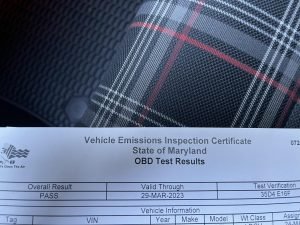To burn old gas, you can either dilute it with fresh gas or use a fuel stabilizer to improve its combustion. Simply pouring the old gas into your car’s fuel tank and mixing it with new gas can help burn the old fuel effectively.
Using a fuel stabilizer can also help break down any varnish or gum that may have formed in the old gas, allowing it to burn more efficiently. Additionally, be sure to check your vehicle’s manufacturer recommendations for using old gas to ensure compatibility and prevent any damage to the engine.
Remember to handle and dispose of old gas safely and responsibly.
Contents
- The Importance Of Properly Burning Old Gas
- Understanding Old Gas And Its Dangers
- Signs That Gas Is No Longer Usable
- Precautions Before Burning Old Gas
- Steps To Burn Old Gas Safely
- Alternative Options For Old Gas Disposal
- Maintaining Fuel Quality To Avoid Future Issues
- Frequently Asked Questions For How To Burn Old Gas
- Conclusion
The Importance Of Properly Burning Old Gas
Burning old gas properly is of utmost importance to avoid negative effects. Old gas can lead to engine damage, poor performance, and reduced fuel efficiency. By ensuring proper combustion, you can prevent clogged fuel injectors and carbon buildup, which can hinder your vehicle’s performance.
Additionally, using old gas can result in rough idling, stalling, and difficulty starting the engine. However, by properly burning old gas, you can reap several benefits. Firstly, it helps to maintain the cleanliness of your fuel system, allowing for optimal engine performance.
Moreover, it maximizes fuel efficiency, saving you money on gas costs. Additionally, it reduces harmful emissions, contributing to a healthier environment. Therefore, it is crucial to follow recommended storage guidelines and dispose of old gas safely to protect your vehicle and promote its longevity.
Understanding Old Gas And Its Dangers
Gasoline is a common fuel used in many vehicles and equipment. Understanding the composition of old gas is essential. Over time, old gas deteriorates and can pose dangers. The process of decomposition occurs due to the evaporation of volatile compounds.
This leads to the formation of gum, varnish, and carbon deposits. Such deterioration can clog fuel injectors, carburetors, and other components, hampering proper engine functioning. Additionally, the octane rating of old gas decreases, resulting in poor engine performance and increased emissions.
Using old gas in your vehicle can lead to hard starting, rough idling, and even engine damage. To prevent these issues, it’s advisable to use fresh fuel and avoid storing gasoline for extended periods. Proper maintenance and regular fuel system cleaning can also help ensure optimal performance and efficiency.
Understanding the dangers of old gas is crucial for maintaining the longevity of your vehicle.
Signs That Gas Is No Longer Usable
Old gas can cause engine performance issues. One sign of unusable gas is its odor and appearance. If the gas smells bad or has a dark color, it may not be suitable for use. Another indication is if the engine is not running smoothly or struggles to start.
These problems can be a result of using old gas. To prevent these issues, it’s important to properly store gas and avoid keeping it for an extended period. If you suspect that your gas is old, it’s best to dispose of it safely according to local regulations.
Regularly using fresh gas will help maintain optimal engine performance and prevent any potential damage caused by old or unusable gas.
Precautions Before Burning Old Gas
When burning old gas, it is important to take certain precautions to ensure safety. First, make sure you have the necessary safety equipment, such as gloves, goggles, and a fire extinguisher. These will help protect you from potential accidents. Additionally, it is crucial to handle the old gas properly.
Store it in a designated container that is specifically designed for flammable liquids. Keep it in a cool, well-ventilated area away from any ignition sources. Before burning the old gas, check for any impurities or contaminants that may affect combustion or create harmful fumes.
Be mindful of the environment and dispose of any leftover ashes or residue responsibly. By following these precautions, you can safely burn old gas without posing a risk to yourself or the surroundings.
Steps To Burn Old Gas Safely
Burning old gas safely requires careful preparation of your equipment. Start by inspecting your gas burning appliance and ensuring it is in proper working condition. Clean any accumulated dirt or debris that may interfere with the burning process. Next, check for any leaks and fix them immediately to prevent accidents.
It is also important to have a fire extinguisher nearby as a safety measure. When it comes to igniting the gas, use a long-handled lighter or a matchstick with an extended reach. Always follow the manufacturer’s instructions and never use any flammable fluids to start the fire.
Lastly, monitor the burning process and be aware of any unusual smells or signs of danger. By taking these precautions, you can safely burn old gas and prevent any mishaps or injuries.
Alternative Options For Old Gas Disposal
Proper disposal of old gas is essential for environmental safety. Recycling and reusing old gas are alternative options to consider. Recycling options for old gas include contacting hazardous waste management facilities or local recycling centers. They can provide guidance on how to safely dispose of old gas.
Some facilities may accept old gas for reuse, while others may provide the necessary tools to safely recycle it. Proper storage and transportation of old gas are also important factors to consider. It is important to follow all safety guidelines and regulations to prevent any accidents or harm to the environment.
Remember to avoid pouring old gas down drains or throwing it in regular garbage, as it can contaminate water sources and soil.
Maintaining Fuel Quality To Avoid Future Issues
Maintaining fuel quality is essential to avoid future issues and prevent the accumulation of old gas. Storing and using fuel properly is crucial, so here are some tips to follow. First, ensure that the fuel containers are tightly sealed to prevent leakage.
It is also important to store fuel in a cool and well-ventilated area, away from direct sunlight or heat sources. Additionally, try to avoid storing fuel for extended periods as it can degrade over time. Regularly rotate your fuel stock, using older fuel first to prevent it from becoming stale.
Lastly, when using fuel, be sure to use it in the order it was purchased to maintain freshness. By following these guidelines, you can ensure that your fuel remains in good condition and avoid the hassle of dealing with old gas.

Credit: www.directstoves.com
Frequently Asked Questions For How To Burn Old Gas
Can You Make Old Gas Usable Again?
No, it is not possible to make old gas usable again.
Is It Ok To Let Old Gas Evaporate?
Yes, it is okay to let old gas evaporate.
Is 10 Year Old Gas Still Good?
Gas that is 10 years old may not be good because it can degrade over time.
How Long Can Gas Sit In A Gas Can?
Gas can sit in a gas can for about 3-6 months without additives to prevent degradation.
Conclusion
To effectively burn old gas, follow the tips and techniques mentioned in this blog post. By removing water and adding stabilizers, you can extend the lifespan of your fuel and ensure it works efficiently in your vehicle or equipment. Cleaning your equipment regularly and using a fuel treatment additive will also improve the quality of the gas and prevent engine issues.
Remember to follow proper safety precautions when handling and disposing of old gas. Taking the time to properly store and maintain your fuel will save you time, money, and reduce emissions. So, don’t let your old gas go to waste – give it a second chance by following these simple steps.
Say goodbye to wasted fuel and hello to a well-maintained engine and equipment. Start applying these techniques and experience the benefits for yourself.
Affiliate Disclosure: As an Amazon Associate, I earn from qualifying purchases made through links on this site.










